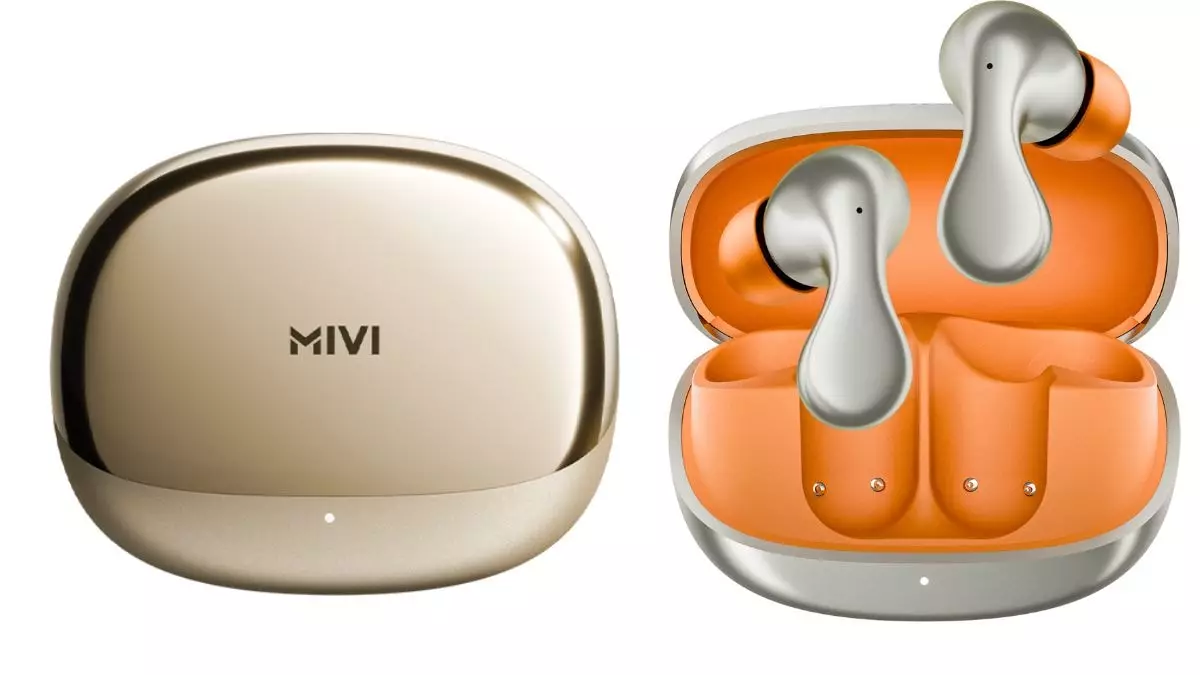The launch of Mivi AI Buds, with promises of cutting-edge voice AI, high battery life, and sleek design, appears on the surface to be a significant leap forward in wireless audio technology. However, a closer examination reveals that much of their touted innovation is rooted in superficial enhancements rather than transformative breakthroughs. The claim that these earbuds feature a context-aware AI assistant, capable of engaging with users through a multitude of pre-loaded personas, sounds impressive. But digging deeper, the functionality depends heavily on external apps, cloud-based data, and preset parameters—limiting genuine autonomy and making much of the AI experience superficial at best.
Furthermore, the emphasis on features like the 13mm drivers, spatial audio, and active noise cancellation are becoming industry standard rather than standout innovations. The company’s focus seems to be on packaging these features in a sleek design and marketing their AI assistant as a game-changer. In reality, these advancements address common expectations rather than setting new benchmarks. When overhyped claims are scrutinized, it becomes evident that the real value of Mivi AI Buds lies more in brand positioning than in technological disruption.
Is the AI Assistant Just a Gimmick?
The AI assistant, branded as Mivi AI, is perhaps the most intriguing yet contentious feature. While the concept of a hands-free, voice-controlled helper with multiple personas might excite consumers, it raises questions about practicality and longevity. The app-dependence, along with the limited customization options and pre-loaded avatars—such as Chef and Wellness Coach—sounded innovative during the announcement. Still, the real-world application remains cautious.
In essence, these AI personas are variants of basic chatbot functions with limited depth, designed more for novelty than substantive assistance. The idea that users will continuously interact with these avatars in meaningful ways is optimistic at best. Additionally, the company’s plan to pivot from free to freemium models hints at an underlying strategy to monetize what initially appears as innovative service. This shift underscores a broader industry trend where the initial hype of free AI features quickly gives way to subscription-based revenue—questioning whether the experience is genuinely valuable or merely a commodity dressed up as innovation.
Design and Battery Life: Standard or Exciting?
From a design perspective, the Mivi AI Buds offer a sleek, metallic unibody inspired by modern esthetics—nothing revolutionary but visually appealing. The inclusion of features like water resistance (IPX4), dual connectivity, and a 40-hour total playback time caters to the practical needs of users. Yet, these are features we have seen in numerous other models from competitors, often with more transparent integration or better overall ecosystems.
The battery life claims, while impressive on paper, are often exaggerated in real-world conditions. Without detailed transparency on usage scenarios, sustained noise cancellation, or how long the AI assistant remains responsive, these features remain superficial selling points. Consumers are often left skeptical of such claims, especially considering the rise of products with similar specifications at comparable or lower prices.
Connecting the Dots: Are These Earbuds Worth It?
Given the current market landscape, the Mivi AI Buds fit into an increasingly crowded space of affordable true wireless earphones. Their competitive price point, especially at Rs. 5,999, makes them accessible, yet this affordability may come at the cost of longevity, software robustness, and real innovation. The company’s reliance on external apps and subsequent shifts toward paid models cast doubts on their commitment to long-term user satisfaction.
Beyond these considerations, the core question is whether consumers are truly seeking more AI-driven features integrated into earbuds, or if they are simply dazzled by marketing tactics. For center-leaning liberals who value technological progress that benefits society without exploiting consumer naivety, these products exemplify the need for critical engagement. New technology should empower users, not trap them in cycles of planned obsolescence or subscription dependencies.
The Mivi AI Buds’ true worth hinges on whether they can sustain meaningful innovation beyond flashy headlines. So far, much of their appeal appears to be built on a glow of superficial allure, with limited regard for genuine user-centric progress. It remains to be seen if they will redefine what consumers expect from wireless earbuds or simply reinforce the industry’s tendency to repackage familiar features in shiny new wrappers.

